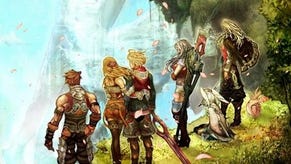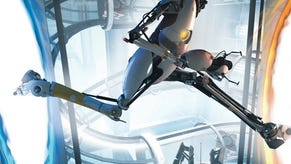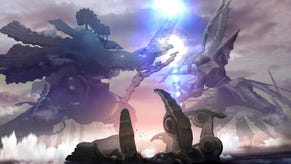Xenoblade Chronicles
Standing on the shoulders of giants.
The premise may be worn, but in the telling, this tale towers. More importantly, perhaps for the first time in Takahashi's oeuvre, it's a tale that plays second fiddle to the game systems. In this regard, the team at Monolith Soft carefully combine mechanics plucked from other titles.
The real-time battle system is closest to Final Fantasy XII's cog-like mechanisms, while the shower of delicious side quests is pure World of Warcraft, filling the world with chances to shine, great and small. Meanwhile, the expansive wardrobe and huge array of weapons (many of which can be customised with crafted gems to add buffs and debuffs) are reminiscent of the latest Dagon Quest.
These ideas are combined with a raft of its own, such as the pinpricks of light that litter every environment (collectibles that can fill a scrapbook for rewards, answer fetch quests or simply be sold) or the flash-forwards into the future that interrupt battles to show you a special move your opponent is due to make soon, allowing you to pre-empt it. The result is a game with a flavour quite unlike any other, and whose onion layers of strategy and motivation prove irresistible - and not only to the JRPG faithful.
In battle, you control just one character. As in Final Fantasy XII, they auto-attack the enemy with brutish sword swings so long as you position them close to the target. Your job then is to manage the long game of your characters' special moves. These 'Arts' can be triggered at any time, but each has a cool-down period before it can be reused. The strategy comes in knowing when to attack, when to defend and when to cast spells, especially as using Arts raises monsters' aggro toward your character.
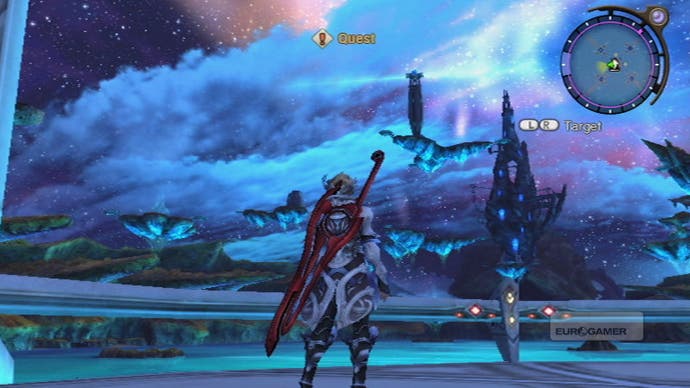
As you fight, a party gauge fills. This is broken into three segments. If a comrade falls in battle, you can raise them as a cost of one segment of the gauge. When all three segments are filled you are free to issue a chain link attack, in which each of your characters can issue any attack in quick succession. Chain links can be key to taking down some of the larger enemies in the game, but as doing so empties your party gauge, you temporarily lose the chance to revive one another.
The Bionis has a pleasing sense of ecosystem. Creatures great and small roam its hills, valleys and fields. Some of these are of a friendly disposition and will leave you well alone unless you attack first. Others are aggressive and will hunt you down. Some respond to sound, others to sight and you'll regularly pass giant beasts 50 or 60 levels your senior. Hack away at one of these monsters and you'll be felled in a single hit.
Further responsibility for your own wellbeing comes because this is a world without borders. No invisible wall will protect you from a cliff edge, and while sheer drops are occasionally used to provide some Zelda-style secret areas, a tumble from the wrong ledge will prove fatal.
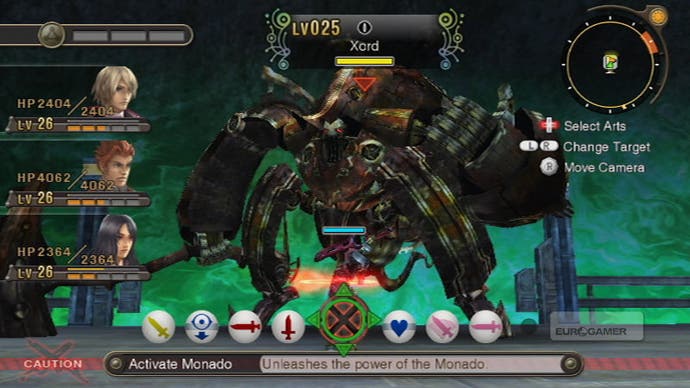
Xenoblade Chronicles may lack the universal appeal of Miyamoto's adventure series; its tendency toward team management makes this a game for those who prize complexity and numbers over economy and colours. But it shares Hyrule's all-important sense of place and delivers that same heady shot of wonder to the spirit as you explore.
No Japanese RPG has more successfully married its various components this hardware generation. It's a game that invites us to reassess an entire genre, pointing to a bold future while nodding its respect towards the past. It's a towering triumph.


